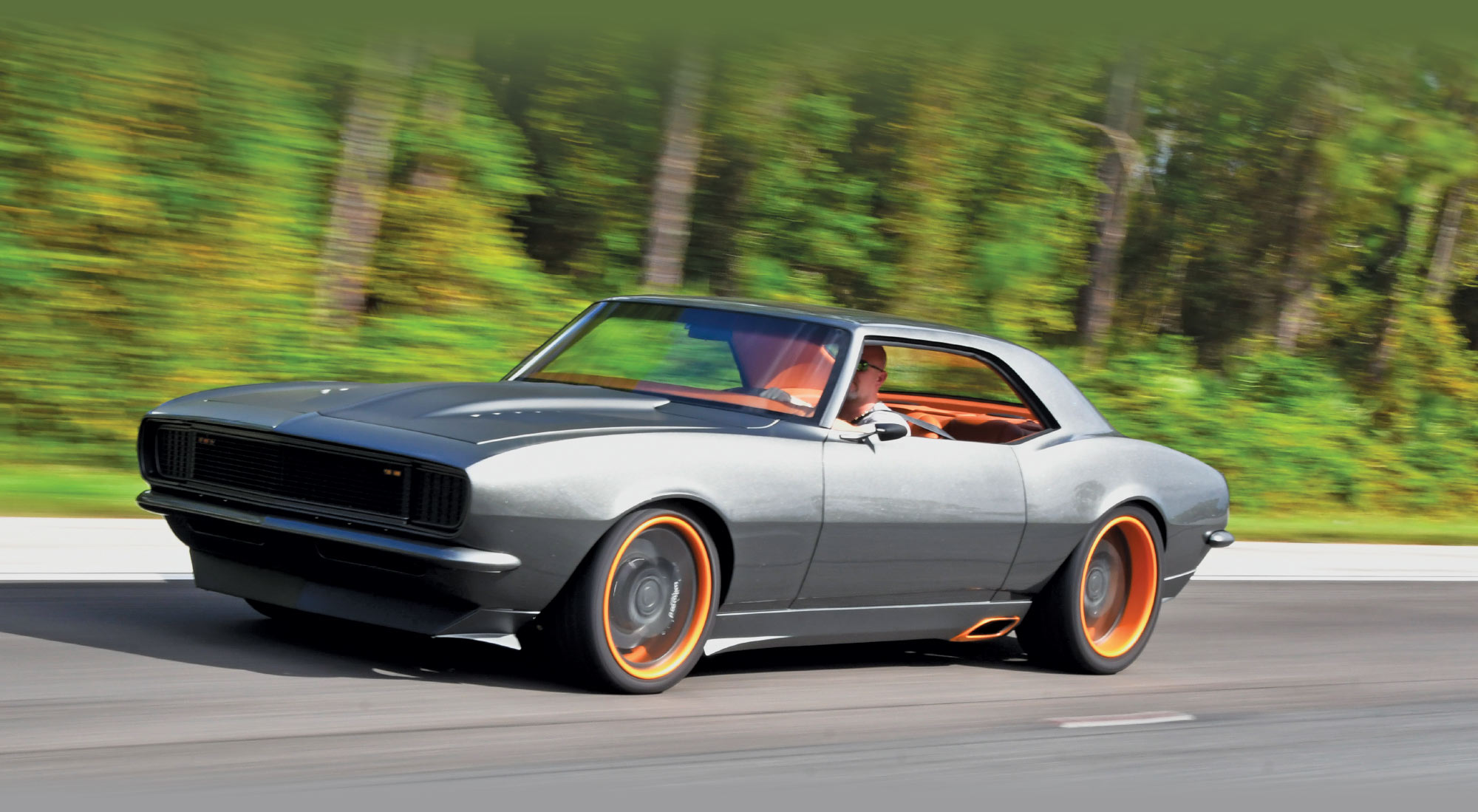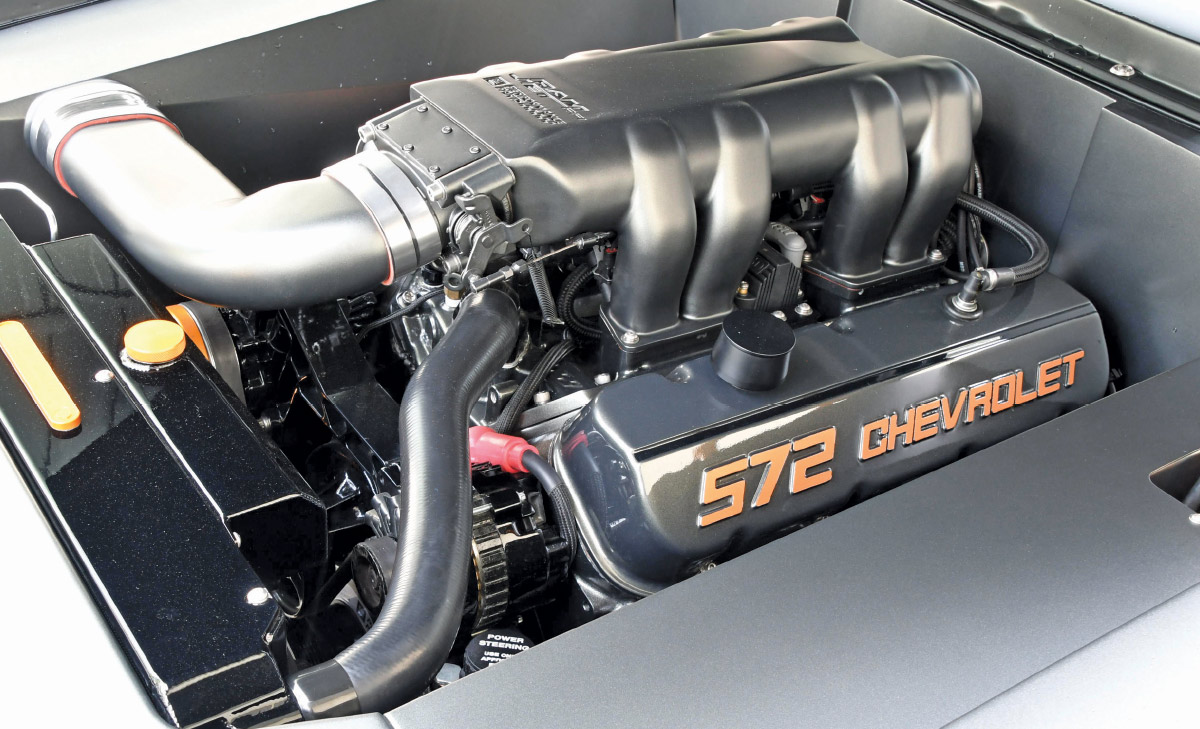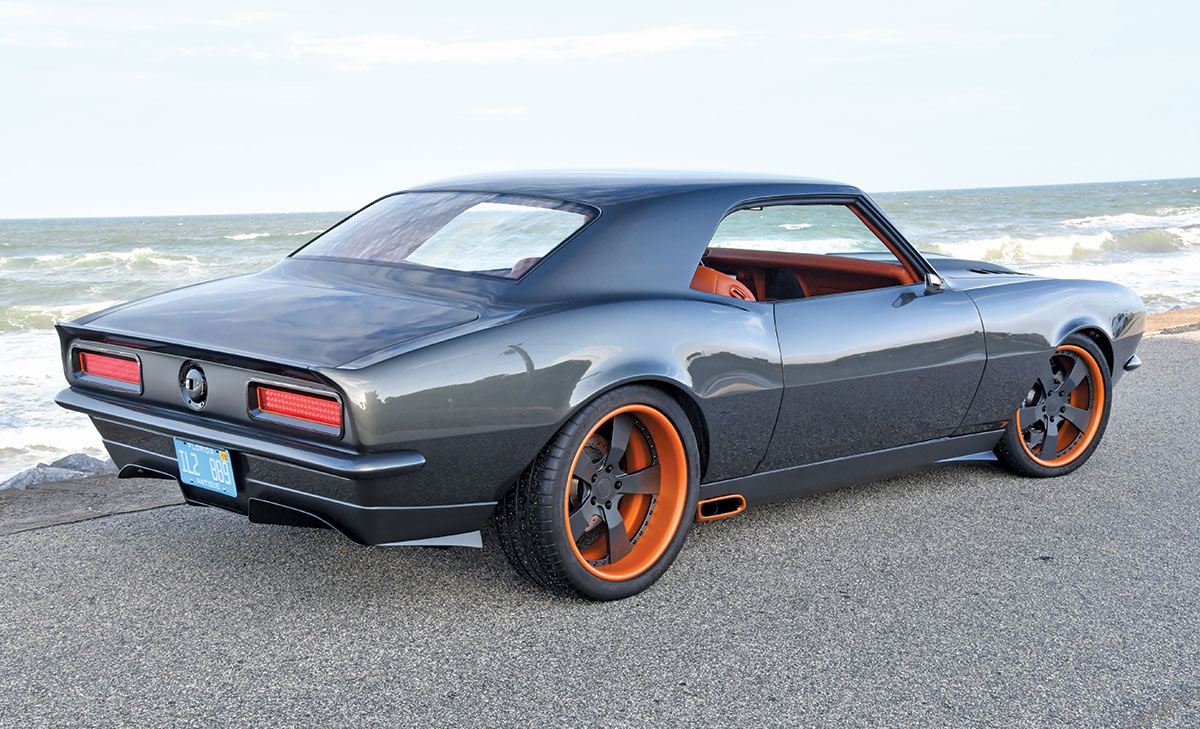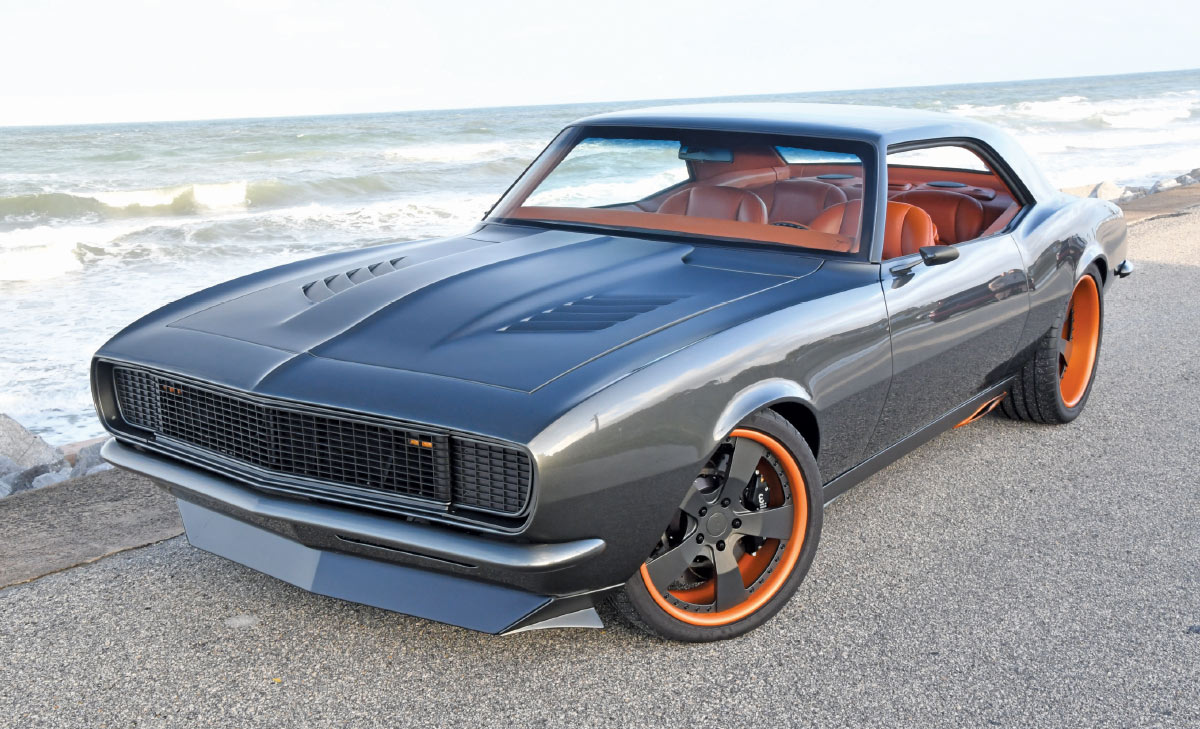 Photography by THE AUTHOR
Photography by THE AUTHOR hen it comes to design, the process is universal. Whether it’s a hundred-story skyscraper or this 620hp ’68 Camaro, it begins with a dream that only determination can transform into reality. The masterpiece comes to life when two talented minds involved in the creation of this automotive masterpiece are car builder Tom Argue and automotive enthusiast John Jerger.





Argue and his team have been specializing in complete restorations and custom builds for the last 17 years. When John arrived at the shop with his damaged pickup, he noticed a dusty ’68 Camaro off to one side. It was originally a customer’s car that became Argue’s car when the customer ran out of money. Coincidentally, John was looking for a new high-performance, show-winning, daily driver. The prospect of resurrecting the Camaro was intriguing so he and Argue agreed on a multiyear collaboration to create this one-of-a-kind missile.
Several phases on the car had already been completed, including the installation of the automotive world’s example of ultimate chaos, a GM 572 crate motor. Combining unique looks with aggressive performance, if V-8s rule the automotive world, then 572s rule V-8s! Pumping out a stout 620 hp, this engine is as unique as it is powerful, thanks to the distinctive GM 502 Ram Jet intake, adapted to the 572 using the intake, plenum, and the throttle body. A set of wrapped headers and SpinTech mufflers deal with spent gases while the 572 valve covers educate spectators. A TREMEC TKO 600, five-speed manual sends power to the 3.73 rear. The final tune-up came from the Steve Morris Engines team in Muskegon, Michigan, using the Internet to remotely refine the interface between the 572, the Holley Dominator package, and the Ram 502 setup. Fully tuned, the adrenaline rush when you punch the throttle on this big V-8 can cause a pucker factor strong enough to suck up the seat covers!



John is an accomplished stereophile and, working with the Argue Designs team, he created a sophisticated system that begins with the tiny Audison Bit One HD Digital Processor almost hidden in the console just ahead of the car’s handbrake. The playlist comes from John’s 7-inch Samsung tablet and controls the pair of floating JL Audio HD amps in the upholstered-to-match trunk delivering 2,000 watts of power. Surround sound fills the cab beginning with the separated JL Audio ZR mids and highs in the doors along with matching 6x9s in the package tray. Two trunk-mounted, 10-inch JL Audio subs send pulsing bass from the glass-lined Isobaric chamber ducted through the rear package tray. The glass in the chamber is engraved with a Piranha—an appropriate name for this omnivore of a car!
With luxury inside and brute force underhood, the final phase was crafting the body. The Camaro’s fiberglass cowl induction hood features inset Dodge Viper louvers while the custom grille incorporates tiny parking lights and directional signals along with LED headlights behind the RS grille. Detroit Speed electric headlight doors replaced the often-hesitant vacuum-operated originals. After eliminating door handles and driprails, the front and rear bumpers were shaved, tucked, and painted. Custom metal ground effects add to the aero look. That’s a Viper quick fill gas cap between the Marques Designs Digi-Tails LED taillights. Argue eliminated the windshield wiper mechanism and used the empty space to hold the brake and clutch reservoirs, giving the engine room its clean makeover.
With body mods complete, the final phase was paint and PPG worked with the shop to create their unique shade of Piranha Green. The body color is accented with bright orange, another precise match to the anodized aluminum accents that appear throughout the vehicle. The car has been complete about six months, although the photo shoot was the first time the car was at speed on the interstate. John was all smiles afterward when he said, “It handled beautifully!”